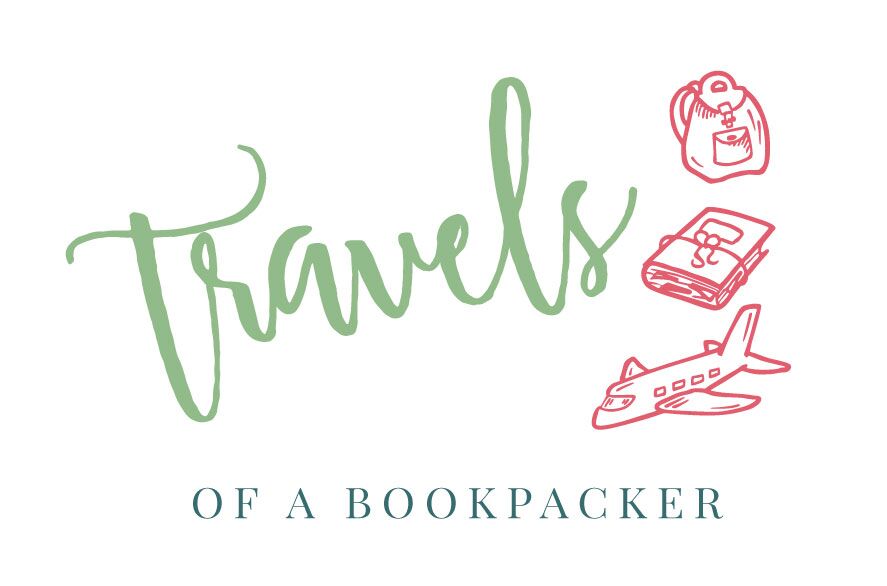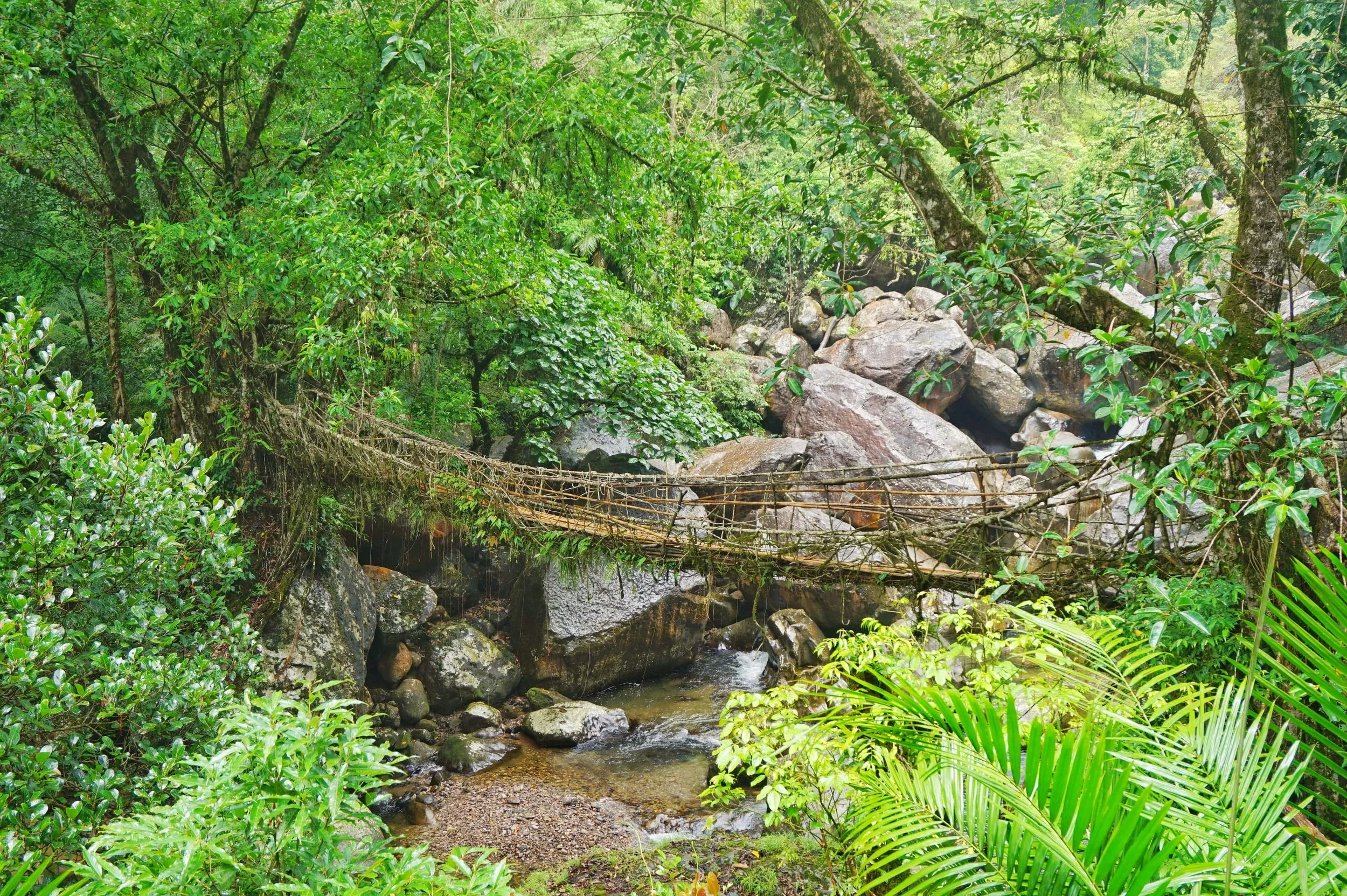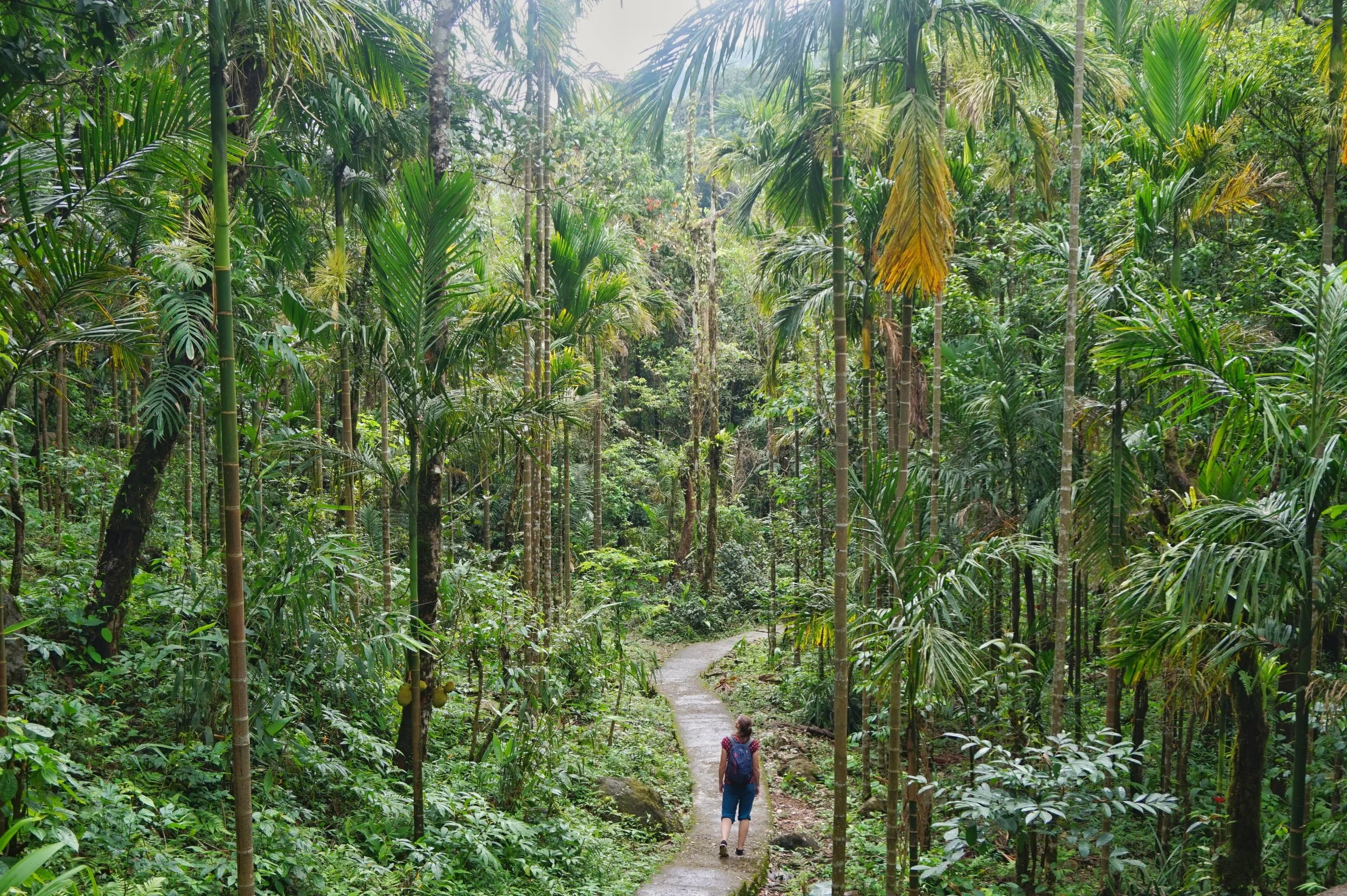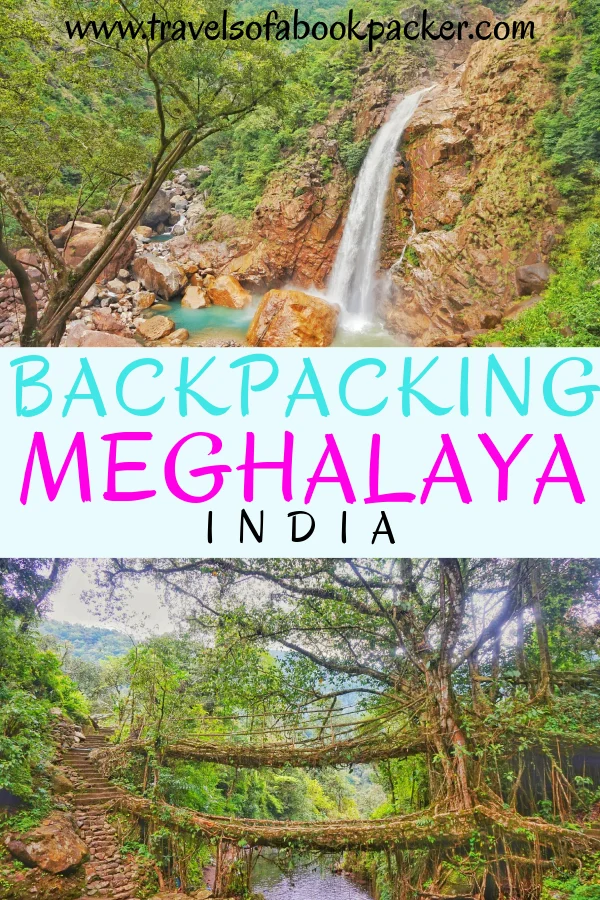Travel in Meghalaya is becoming more and more popular but most visitors take a tour or private taxis so there is limited information available about backpacking Meghalaya and traveling around independently. This is a collection of all the information and experiences we had while backpacking in Meghalaya to help you plan your trip independently and do it on a budget!
Chances are, if you’re planning a trip to Meghalaya you love nature, getting off the beaten path and a bit of adventure. You’ll find all these things in abundance and might find yourself spending longer than you planned wandering the forests and root bridges of Nongriat or relaxing in a riverside bungalow in the world’s most ridiculously named town – Shnongpdeng. But whether you have three days or three weeks, backpacking Meghalaya and discovering the untouched nature of India’s Northeast is an incredible experience.
Backpacking in Meghalaya is one of the best things to do in India, North-East India is a must visit destination!
Transport in Meghalaya
Meghalaya is small but hilly. Driving distances are short, meaning you can get between most destinations in a couple of hours. The main form of public transport in Meghalaya is sumos (shared jeeps). There are also public buses between some destinations.
Sumos leave from designated stands within each town or city. There is a set fare and they leave when full (10 people). Sumos tend to leave more frequently in the morning and stop at some point in the afternoon. Between less popular destinations you will need to check times with locals to make sure you don’t miss the only sumos for the day.
Taxis are widely available on the streets of nearly every town and can be negotiated for a single trip or a full tour. If you have limited time and are in a group this can work out to be an affordable option.
Publick transport with Sumos in North-East India is a unique experience, and will be part of your day to day transport while backpacking in Meghalaya.
Budget for backpacking Meghalaya
We found Meghalaya to be more expensive than many other parts of India and needed to adjust our daily budget. We managed on a budget of €20 per person per day in double rooms. There are not many hostels with dorm rooms but places will often offer a discount for single occupancy. Below are some price guidelines to help your budgeting.
Double room in a guesthouse: 1000 INR
Meal in a local restaurant: 300 INR
Meal at a homestay: 130 INR
Sumo journey: 250 INR
Best time to visit Meghalaya
Meghalaya is know for being one of the wettest places on Earth and as a result, timing is very important. During the monsoon season, you’ll experience rain every day and lots of it! But the rain can add a magical element to the jungles and waterfalls.
If being wet isn’t your thing, aim for October/November or March/April when the weather is a pleasant temperature and there is minimal rainfall. We were in Meghalaya in May and the weather in the higher areas was pleasant but the rains were beginning to hit and the humidity in the jungle was becoming a bit much for hiking.
Best places to visit in Meghalaya
Shillong
Shillong is the capital of Meghalaya and the main transport hub for the area. It is a busy little city but has some interesting sights and makes a good base for a couple of days. The weather in Shillong tends to be much more pleasant than other parts of Meghalaya as it is higher up, we were actually able to dry washing and wander around without overheating.
Shillong is a great base with some western comforts while backpacking Meghalaya!
Things to do in Shillong
Ward's Lake – A peaceful park area around a small lake. It’s nice for a stroll and you can also hire boats.
Don Bosco Museum - A small but informative museum about the history and culture of North East India.
Mary Help of Christians Cathedral – Meghalaya is a predominantly Christian state and as a result there are lots of beautiful and interesting churches dotted around Shillong. We found this one to be the most impressive because of it's size and bright blue colour.
There are some interesting sights in Shillong too! Plan a view days in Shillong during your backpacking trip in Meghalaya.
Where to eat in Shillong
Budget local food – Hotel Hariom
Up-market Asian/Western – Grove Eatery
Great breakfast – Dylan’s Café
Good coffee – Smoky Falls Tribe Coffee
Where to stay in Shillong
During the holiday season it gets very busy and expensive. Booking in advance is advised, we spent a couple of hours walking around the town looking for a hotel with a free room. We lucked upon the amazing Guesthouse Bramhome with both double rooms and a dorm. It was very central and affordable by Shillong standards (600 INR per person in the dorm). Unfortunately, they don’t use booking engines so if you don’t want to risk turning up have a look for some other Shillong accommodation options here.
How to reach Shillong
Shillong is connected to Guwahati by a highway, the journey takes around 2.5 hours. There are sumos leaving from the end of GS Road, next to Highway 27 when full, it costs 200 INR per person. There are also plenty of taxis around the train station in Guwahati who will take you to Shillong for around 400 INR per person.
Cherrapunji (Sohra)
Cherrapunji is known as the wettest place on Earth and it did not disappoint during our stay there. There is very little to see in Cherrapunji town but it is a popular base for seeing waterfalls and caves in the area and a transit point for travellers heading to the root bridges of Nongriat.
Things to do in and around Cherrapunji
Cherrapunji Market – Market day in Cherrapunji is every 8 days (have a look at the calendar) and the entire town bustles with all kinds of fresh produce. If you happen to be passing through it is worth stopping by for a browse.
The market in Cherrapunji is a must visit destination while Backpacking in Meghalaya.
Nohkalikai Waterfall – Located about 4km from the town. The waterfall is very impressive even in the dry season. You can walk, take a taxi or ride a bike if you can get one from your guesthouse.
Garden of Caves - This beautiful park is around 10km from Cherrapunji town. It's a relaxed place for a wander and contains several interesting caves. You can get a taxi from Cherapunji or try hitchhiking.
Where to stay in Cherrapunji
There are not many options in the town and prices are on the rise, especially in peak season. We stayed in a basic but affordable room at Bynnud Lodging Cottage. The owner was absolutely lovely and cooked us the most amazing meal for just 130 INR per person. Check out accommodation in Cherrapunji here.
How to reach Cherrapunji
From Shillong, you can take regular sumos to Cherrapunji from the sumo stand located in a carpark building near the market. The journey takes around an hour and costs 70 INR per person.
Nongriat
The charming jungle village of Nongriat is becoming more and more popular but due to the 3000 stairs between it and the nearest road visitors are still limited to those with a sense of adventure. Nongriat is famous for the living root bridges located nearby and is a great base for exploring the area. The village itself is tiny and relaxed with lots of options for day hikes or just relaxing.
The biggest attraction in Meghalaya are the living root bridges in the jungle in Nongriat. The root bridges are a must visit place while backpacking in Meghalaya.
Things to do in Nongriat
Root bridges – the famous double-decker root bridge is located in the town and has a pool for swimming underneath. You can also walk to the neighbouring village of Mynteng to see another, quieter bridge.
Rainbow Falls – about 1.5 hours from Nongriat you reach the beautiful waterfall with pools for swimming. Be careful though as the current can be very strong.
The Rainbow Falls near Nongriat are one of the best places to visit on your backpacking trip in Meghalaya.
Where to stay in Nongriat
There are only three accommodation options in the village and by far the best of these is Serene Homestay. Byron runs a basic but friendly homestay with dorm and twin rooms. It costs 300 INR per person in a dorm or 800 INR for a double room. They serve a good range of breakfast and lunch options and do an amazing buffet dinner for 130 INR. It is best just to turn up and if it is full Byron will arrange another place for you to stay.
How to reach Nongriat
Lush jungle to explore on a trip backpacking in Meghalaya.
To get to Nongriat take a shared taxi from Cherapunji to Tyrna (100 INR per person) and you will be dropped at the top of the walking trail. It takes around 1.5 hours down some very steps to reach Nongriat. The walk is stunning and paved the entire way but gets very humid so take lots of water! Along the way there is also an impressive root bridge to see. Locals charge 20 INR to see the bridge which can be avoided by accessing it further along the path but the small contribution hopefully goes towards preserving the area.
It is also possible to hike to Nongriat from Cherapunji. This route takes about 3 hours and is very steep and unpaved. If it has recently rained the path is very slippery and difficult.
Dawki
Dawki is the town right on the border to Bangladesh. There isn’t much to do in Dawki and it is a busy border town. There are some options for going on boat rides along the famous Umngot or Dawki river but for a much nicer experience we recommend heading 30 minutes further to the town with the best name we’ve come across - Shnongpdeng.
Shnongpdeng
The famous crystal clear river waters near Shnongpdeng. Backpacking Meghalaya.
This little village but the river is becoming a small tourist hub but retains a sense of calm. Bamboo bungalows line the river and there are also tents right on the river bank. A large suspension bridge provides perfect views of the famously crystal clear waters and the valley beyond. You can also try all kinds of water activities such as kayaking, boat trips and fishing.
Where to stay in Shnongpdeng
As with lots of the northeast, we found accommodation here to be far more expensive than we anticipated. Expect to pay 1500 INR per night for a bungalow and about 1000 INR for a tent. The bungalows at Brightstar Camps (also called Toshan Guest House) were clean and well built, surviving the epic thunderstorms that happened while we were there. (contact the manager Micky 9862602776 in advance if you want to reserve a bungalow)
Be aware about visiting in the wet season. If it rains the water becomes brown and muddy meaning you won’t get any of the beautiful pictures you see on Google. But the area around is still nice for exploring.
Backpacking Meghalaya. River near Shnongpdeng is a must visit destination.
How to reach Shnongpdeng
From Shillong take a sumo to Dawki which takes around 2.5 hours and costs 120 INR. There are no direct sumos from Cherapunjee to Dawki so you will either need to go back to Shillong and change or get dropped at the turn off to Dawki and try to flag down a sumo with empty seats or hitch a ride. This saves you about an hour of driving but is less certain. We only waited about 10 minutes and got a ride with some friendly locals heading to work in Dawki.
From Dawki take a taxi which should cost 200-300 INR. There are also sumos but they didn’t go very regularly.
Mawlynnong
This tiny village claims to be the cleanest village in Asia. We still haven’t really figured out what that means or what the criteria is but expect to be greeted by litter-free streets. There are a couple of root bridges to see here also but we recommend just stopping off here on the way to Dawki and Shnongpedeng.
How to reach Mawlynnong
Mawlynnong is 18km off the main road to Dawki. You can take a taxi from Dawki or ask the sumo to drop you at the turnoff and try hitching a ride down to the village.
There's a lot to keep you busy in the beautiful surroundings of Meghalaya and it was one of our favourite places we visited in India. It is very wet and humid so make sure you pack these things:
- Fold up rain jacket - Buy Now
- Mosquito coils - Buy Now
- Good hiking/walking shoes - Buy Now
- Waterproof backpack cover (get one before you go, we struggled to find one in India) - Buy Now
- Swimwear for the beautiful waterfalls and pools
- Quick dry clothing such as these T-shirts because of the humidity cotton never dries properly!
- Waterproof sandals such as Tevas (I have a pair and love them to bits!) - Buy Now
















Everything you need to know for independent and budget travel in Sikkim. Includes information about transport in Sikkim, places to stay and the best places to visit in Sikkim.